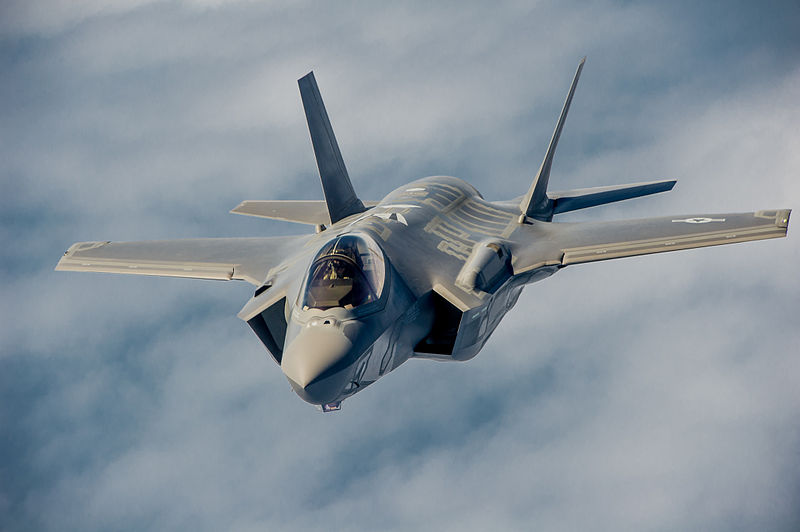As early as Monday, the US Air Force could declare the new F-35 Joint Strike Fighter combat ready. This would mean that the F-35 can, theoretically, be deployed overseas for military missions.
“We have achieved all our milestones,” said Lt. Col. Steven Anderson, an officer with the Air Force’s 388th Wing in Utah – the unit set to be the first operational F-35 unit in the Air Force.
General Hawk Carlisle is the head of the Air Combat Command (ACC). The ACC oversees most of the Air Force’s frontline fighter squadrons. Carlisle is charged with making the formal declaration. Observers expect him to make that decision on Wednesday at the latest.
The jet has been in development for 20 years at a cost of $100 billion dollars.
Still, it could take another 20 years and $300 billion for the Air Force to get all of the 2400 F-35s they intend to buy. Even though the plane could technically be deployed as early as August, the plane will be held back a few more years to work out its technical difficulties.
While the F-35 might be officially ready, that doesn’t mean all of its problems have been resolved. Even with the official word from the Air Force, the JSF is less maneuverable, more complex, less reliable, and more expensive than promised. The plane that the Air Force is getting is not the plane that was originally promised. Originally, the JSF was supposed to be able to replace almost all planes in the Air Force, Navy, and Marine Corps. Getting to that point has proven complicated.
The only thing the three branches of the military agreed on was that the plane needed stealth – to avoid radar detection. The Air Force wanted the plane to be cheap, simple, and maneuverable. They wanted one engine, a small wing, and a slim fuselage. The Navy wanted a twin-engine plane and, more importantly, one able to take off and land from carriers. The Marines wanted vertical take-off and landing capabilities.
To satisfy all three customers, Lockheed came up with three versions of the JSF, the F-35A for the Air Force, the F-35B for the Marines, and the F-35C for the Navy. The military and Lockheed wanted to keep costs down, so they tried to keep all three as similar as possible; compromises were made.
The compromises failed to keep the costs down after all. In fact, the conflicting requirements have driven the costs up. In 2001, the Pentagon expected the JSF to cost taxpayers about $200 billion for 3,000 planes.
In a few years, that price had jumped to $400 billion plus $600 billion for fuel, parts, and pilot training over 30 to 40 years of use. That figure comes after the Pentagon cut hundreds of F-35s from production to save money.
There have been numerous technical issues with the planes. The decision to declare the plane operational ready was reached by reducing the requirements of the plane by limiting the types of missions and reducing the weapons it will use.
